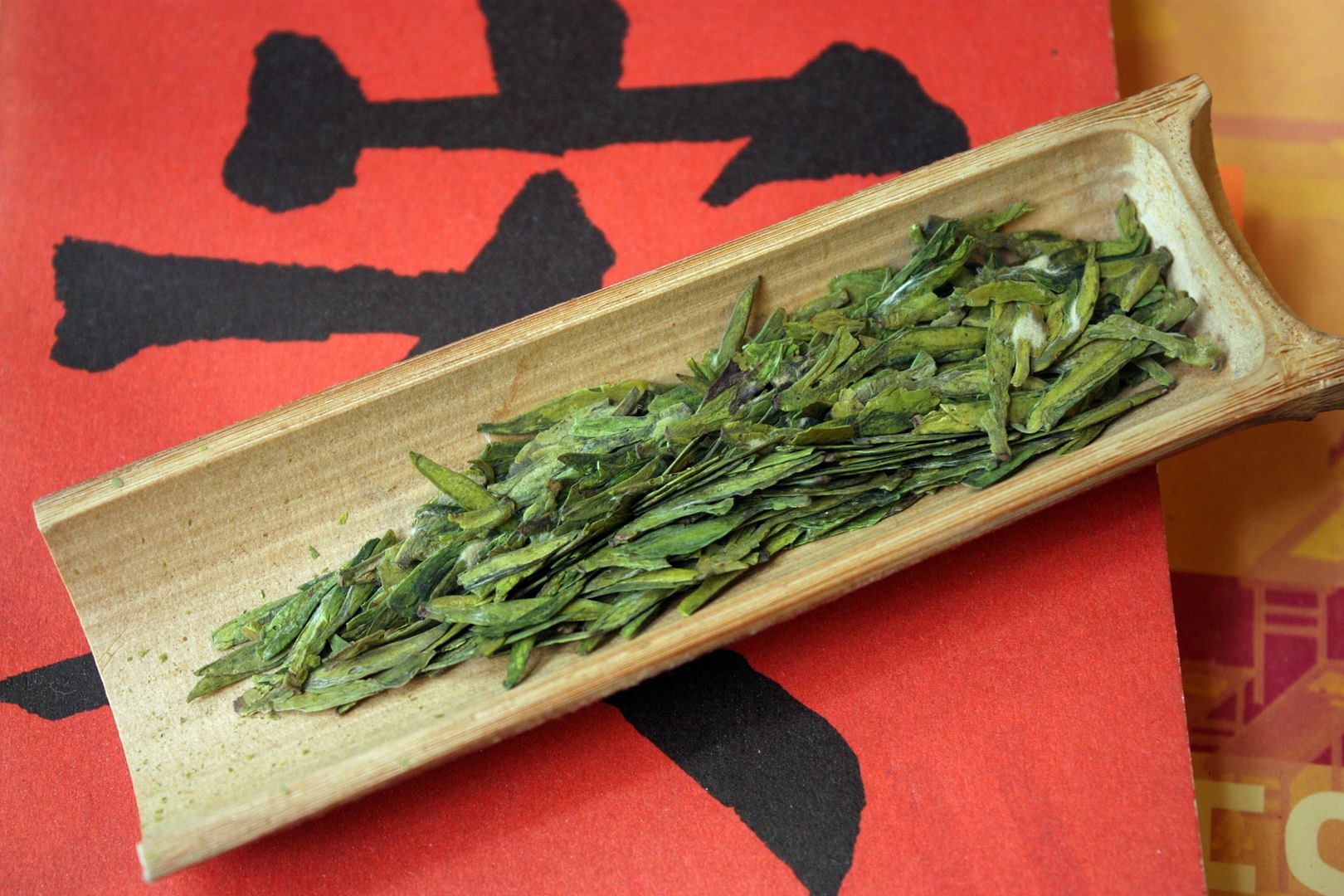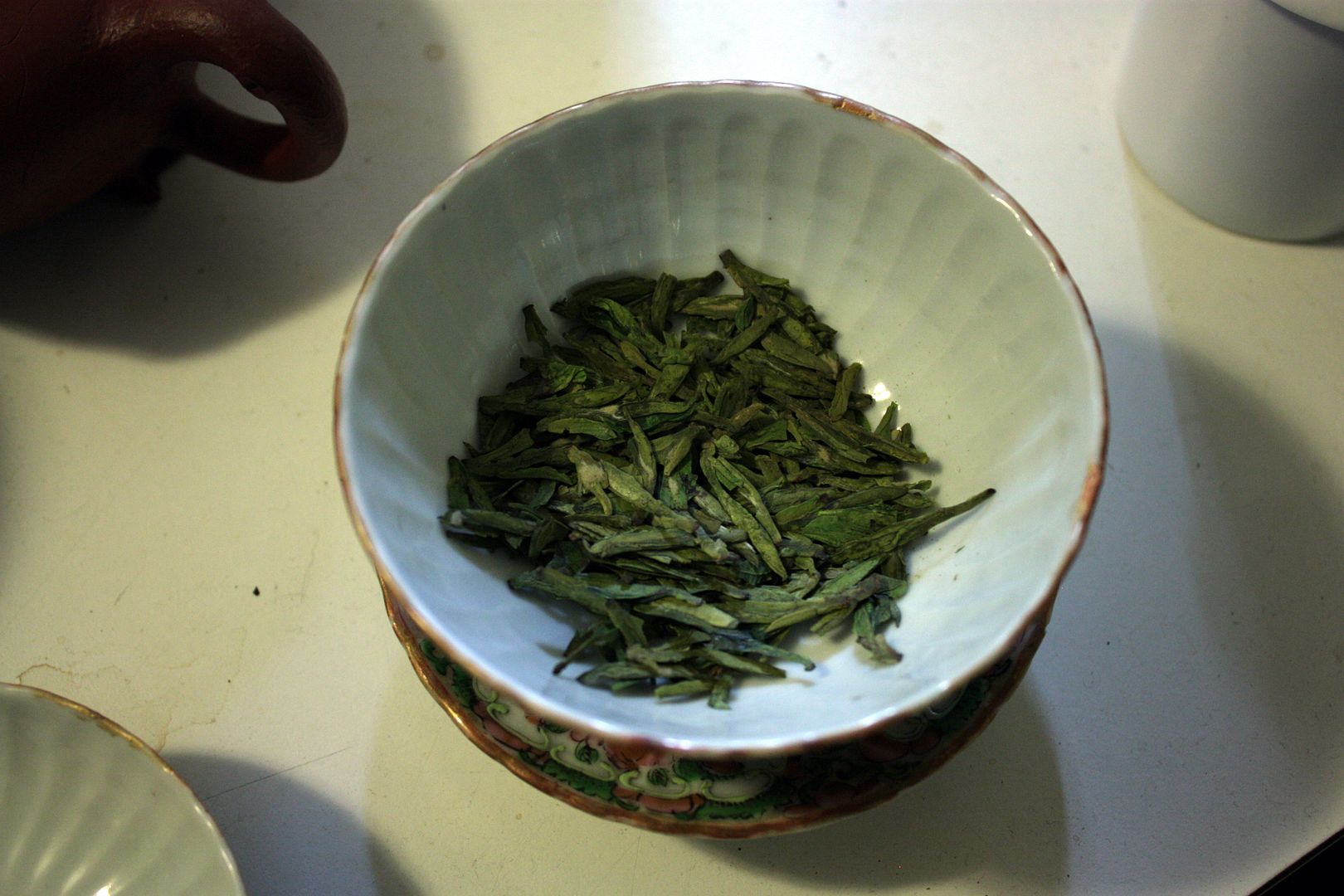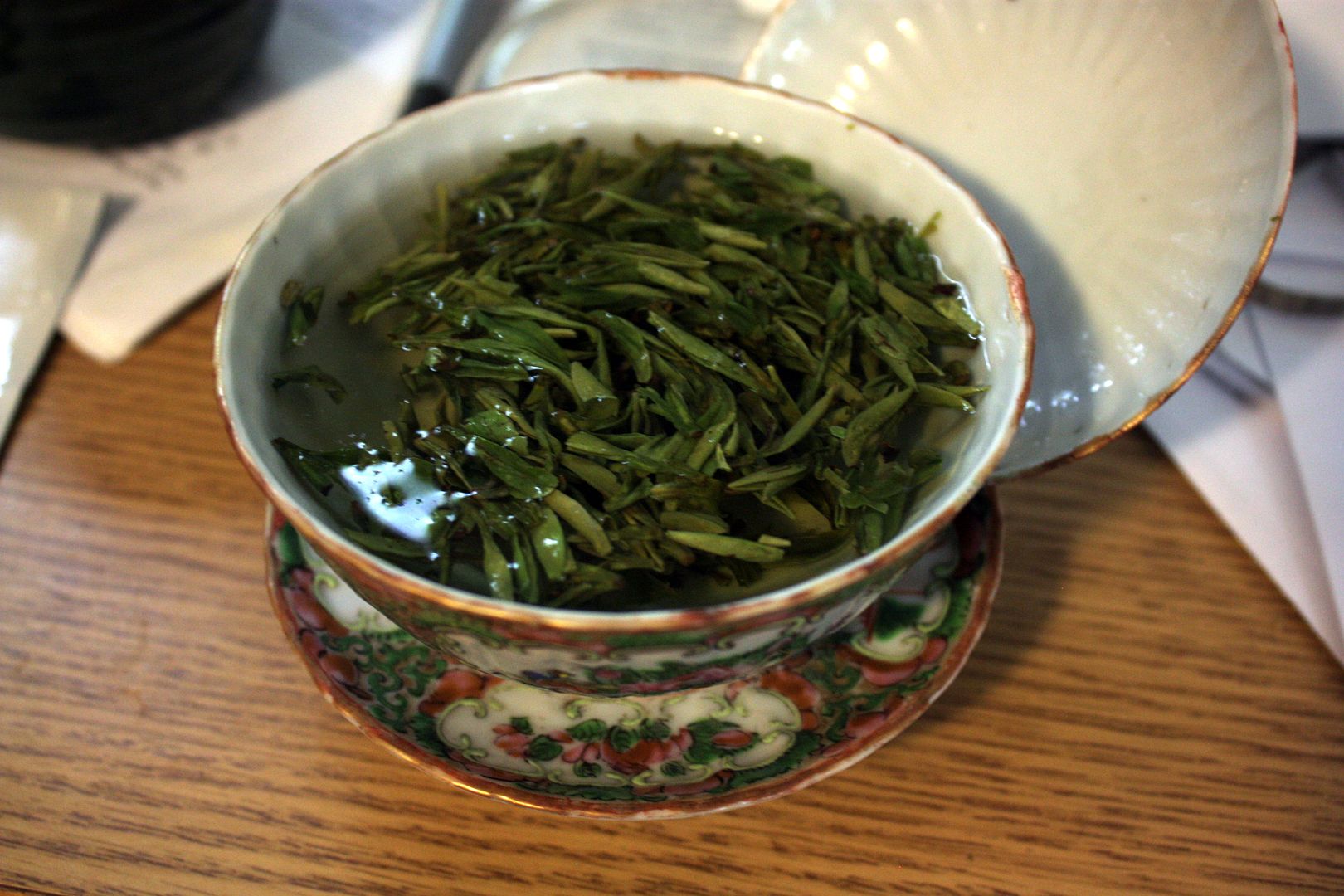Longjing is my first love. I’ve talked about longjing a long time ago. It was the tea that got me into tea drinking. It’s the tea that my grandpa likes to drink a lot (yes, in grandpa style), and it’s also the drink of choice for folks from my area of the country. All this oolong stuff is just silly, and puerh is obviously crap. Longjing (and maybe biluochun) are the gold standards of what constitutes a proper tea.
I used to be pretty serious when brewing longjing — gaiwan with a fairness cup to cool the water, a soft pour, quick(ish) steeps. The resulting brew comes out very, very light in colour. The best longjing, as my old post already mentions, are usually very faint in colour — almost white, rather than green, is the norm. If your leaves are dark green and the tea comes out yellow, it’s probably harvested later or low grade stuff. If someone sells you a mingqian (pre-Ming) longjing for $400 a pound and it’s the colour of pine needles, it’s no good.
Another physical trait of decent longjing is that they tend to be hairy, and the buds should ideally be very thick and round. They should look “fat”. If the leaves look “skinny” to you, it’s probably not a very good grade, although of course individuals differ, and the ultimate test is still in the taste. Using appearances to judge tea is a very flawed way to do so, but for something like longjing it is actually possible to get some idea of what the tea is like before even trying it.
I don’t drink much longjing these days, mostly because they tend to be expensive, and I don’t drink much of them to warrant a purchase. Every year I might drink it a handful of times, and the rest, unfortunately, turn to yellow tea, old, somewhat weird tasting, but still drinkable. They are hardly worth the cost, however. Not being near the source also doesn’t help — longjing is something you need to purchase in person, rather than from some online vendor. Being in the US hasn’t helped my longjing habit.
I did receive a sample recently from Toki, however, so I broke it out and gave it a spin. It was a generous sample, so I didn’t use all of it. First off, the leaves

The colours here are a little off — my house has poor lightning for pictures, which is why these days I don’t take as many pictures. You can see the white tuffs of hair on the right hand side on one of the leaves, and scattered around. Different longjing from different vendors always look different.

These days when I make longjing, I generally use a gaiwan and make it the old fashioned way — in the gaiwan as a sipping cup. If that’s how people used to make it for hundreds of years, then I see no reason why we should go all fancy on it. It is, in other words, grandpa style with gaiwan.

How much leaves to put into these things is key — too much and you risk stuffing the cup and making it incredibly nasty. Too little, and it’s going to be bland. For this sort of brewing, if it covers the bottom of the cup it’s probably about right.
Now, how’s the tea? Fragrant, with a nice minty feel down the throat. I find it to be beany, which is normal for this kind of longjing. It’s not too astringent even when brewed for a while — which is a good thing. I’ll probably make it once the gongfu way, but drunk this way the tea is quite nice.




 RSS - Posts
RSS - Posts
I took you at your suggestion and have been reading some of your old post-Covid posts. I haven’t been to…